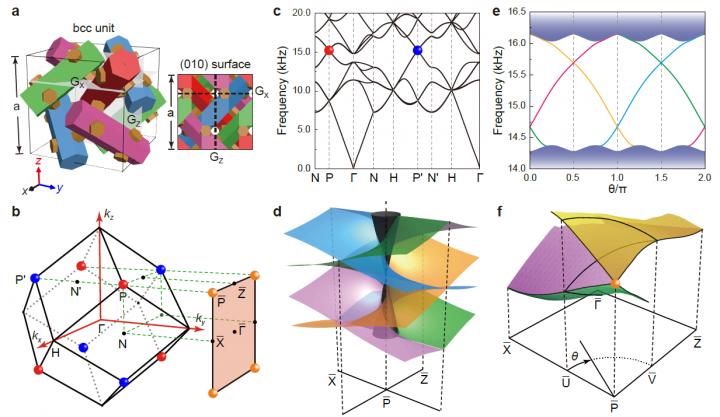
Credit: BY Xiangxi Cai, Liping Ye, Chunyin Qiu, Meng Xiao, Rui Yu, Manzhu Ke, Zhengyou Liu
The discovery of new topological states of matter has become a vital goal in fundamental physics and material science. A three-dimensional (3D) Dirac semimetal (DSM), accommodating many exotic transport properties such as anomalous magnetoresistance and ultrahigh mobility, is an exceptional platform for exploring topological phase transitions and other novel topological quantum states. It is also of fundamental interest to serve as a solid-state realization of a (3+1)-dimensional Dirac vacuum. So far the realized Dirac points always come in pairs and could be eliminated by their merger and pairwise annihilation through the continuous tuning of parameters that preserve the symmetry of the system.
In a new paper published in Light Science & Application, scientists from the Key Laboratory of Artificial Micro- and Nano-Structures of Ministry of Education and School of Physics and Technology, Wuhan University, China, we report an experimental realization of a 3D phononic crystal that hosts symmetry-enforced Dirac points at the Brillouin zone corners. Markedly different from the existed DSMs, the occurrence of Dirac points is an unavoidable result of the nonsymmorphic space group of the material, which cannot be removed without changing the crystal symmetry. In addition to the Dirac points identified directly by angle-resolved transmission measurements, highly intricate quad-helicoid surface states are unveiled by our surface measurements and associated Fourier spectra. Specifically, the surface states are composed of four gaplessly crossed spiral branches and thus are strikingly different than the double Fermi arc surface states observed recently in electronic and photonic systems.
“This study may open up new manners for controlling sound, such as realizing unusual sound scattering and radiation, considering the conical dispersion and vanishing density of states around the Dirac points. The dispersion around the Dirac point is isotropic, and thus, our macroscopic system serves as a good platform to simulate relativistic Dirac physics.” the scientists forecast.
###
Media Contact
Zhengyou Liu
[email protected]
Related Journal Article
http://dx.




